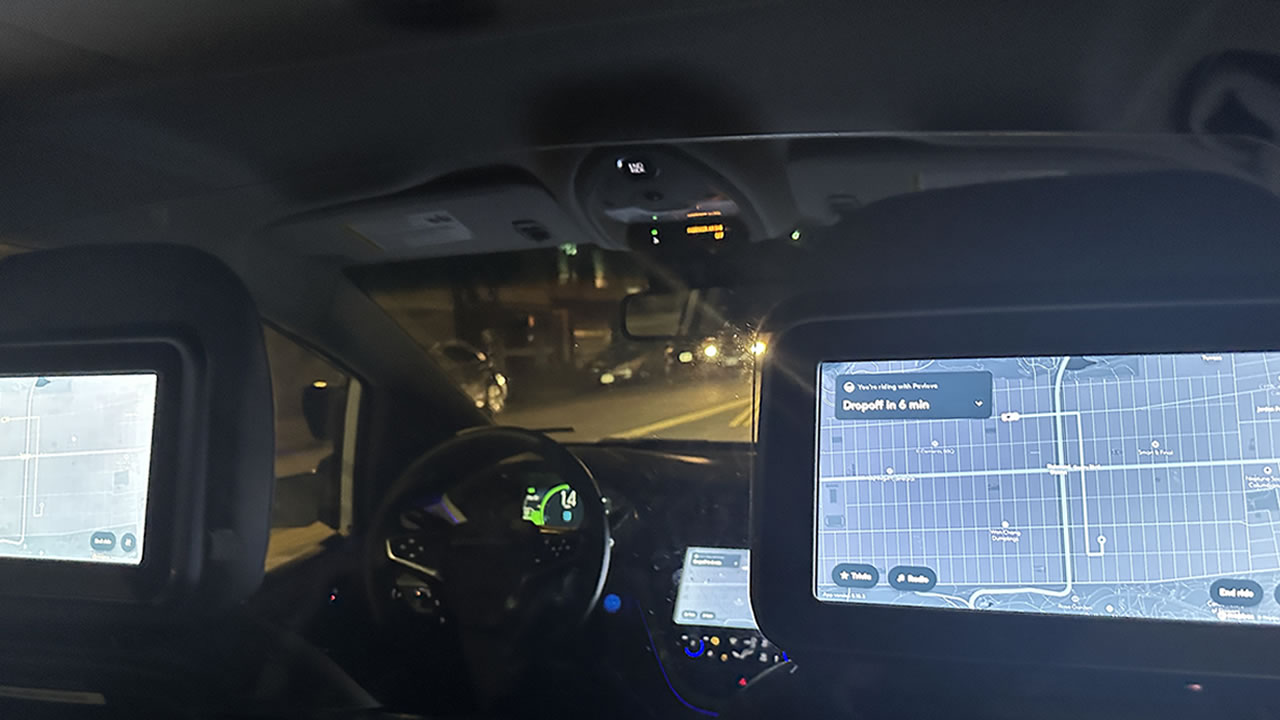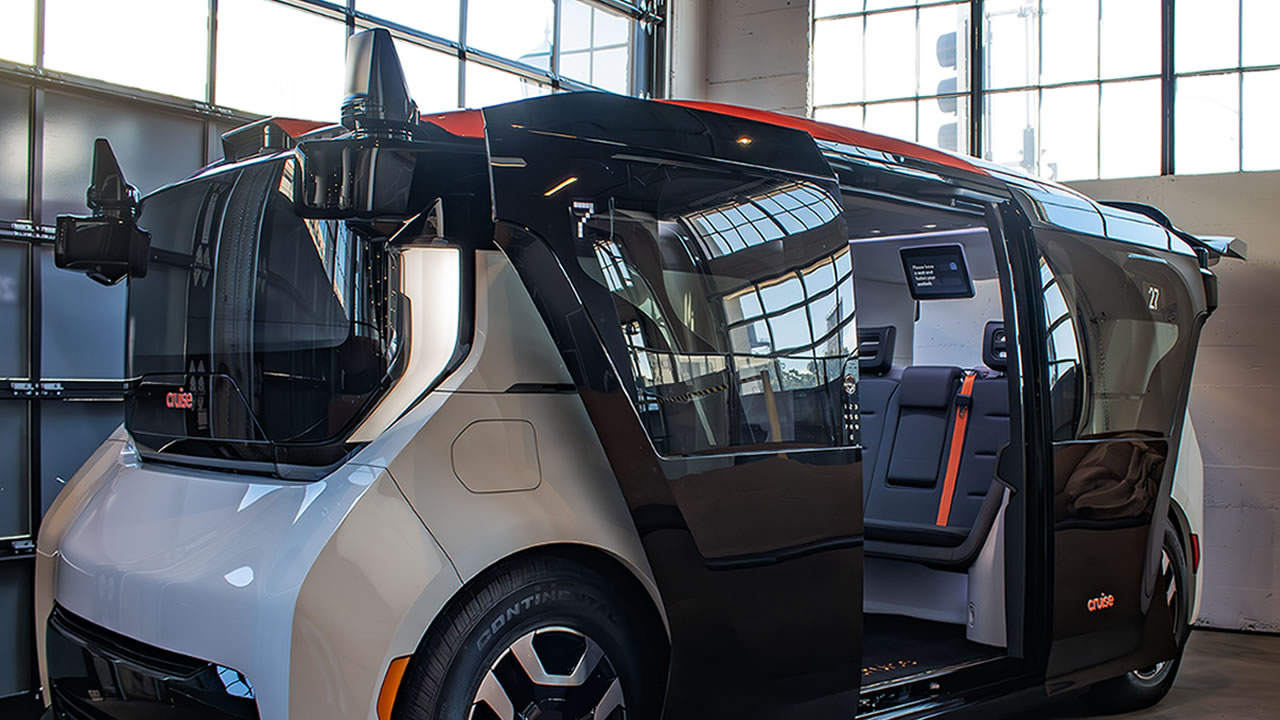SAN FRANCISCO (KGO) — In 2023, San Francisco became the first and only city in the world where two rival driverless robotaxi companies operated side-by-side on public streets. It was the dawn of the world’s first real robotaxi market, and the race was on between Alphabet’s Waymo and General Motors’ Cruise.
Both companies faced growing pains — cars stalling in intersections, blocking emergency vehicles, and confusing pedestrians — but it slowly became clear that of the two, Cruise stood out for its bold ambition. While Waymo moved with caution, Cruise charged ahead with a Silicon Valley-style blitz to deploy their robotaxis across the U.S. at scale — and fast.
A DRIVERLESS TOMORROW: How Waymo went from secret Google project to dominant robotaxi company
For a brief moment, it looked like Cruise might win the race to a driverless future. But just as quickly as it rose to prominence, Cruise came undone — its dramatic fall from grace triggered by a single horrifying incident on the streets of San Francisco.
So how did Cruise, once a crown jewel of the AV industry, go from unicorn to cautionary tale in the span of just a year?
The backstory: How Cruise took off
If San Francisco would like to be the world capital for AI, this is one way to prove to the world that we are really at the cutting edge.
Cruise began with Kyle Vogt, a serial entrepreneur who had already made his mark as a co-founder of Twitch, the video live-streaming platform acquired by Amazon in 2014. In 2013, Vogt launched Cruise with a vision: turn ordinary cars into self-driving ones.
Cruise entered the Winter 2014 class of Y Combinator, the famed Silicon Valley accelerator known for birthing unicorns like Airbnb, Stripe, Dropbox, and DoorDash. The startup quickly caught the eye of investors and automakers alike.
Just two years later, in 2016, General Motors acquired Cruise for over $1 billion. It was one of the earliest and boldest bets by a legacy automaker on self-driving technology. For GM, Cruise represented a lifeline — a shot at staying relevant in a rapidly changing industry.
GM installed its then-president, Dan Ammann, as CEO of Cruise, signaling its commitment to turn the startup into a commercial powerhouse. Vogt stepped aside from the chief executive role, staying on as Chief Technology Officer instead. While he was no longer in charge of day-to-day operations, he remained the face of Cruise’s technology and vision.
For a while, the partnership worked. Cruise grew, hired aggressively, and expanded its technical capabilities. It opened offices in multiple cities and began testing cars on public roads. And yet, tensions between the old guard and the new eventually came to a head.
Leadership turbulence
Dan Ammann reportedly wanted to take Cruise public or spin it off as an independent company. Mary Barra, GM’s CEO, disagreed. She saw Cruise as core to GM’s long-term future, a central piece of its transformation into a tech-forward automaker.
The disagreement came to a head in December 2021, when Barra abruptly fired Ammann.
It was a turning point-both for Cruise and for Vogt. In early 2022, he returned as CEO, bringing back the startup energy that had once defined the company. Under his leadership, Cruise’s ambitions grew even more audacious.
The Expansion Era
With Vogt back at the helm, Cruise hit the gas — hard.
San Francisco became the first city to offer limited commercial rides in fully driverless Cruise vehicles. Riders, chosen from a waitlist, could hail a Cruise robotaxi through an app and be ferried around at night without a driver in the front seat.

From there, the comp any expanded rapidly. In 2022, Cruise launched services in Phoenix and Austin with record-breaking speed, going from zero to live operations in just 90 days.
By 2023, Cruise had announced plans for robotaxi deployments in Houston, Dallas, Miami, and Nashville. Its internal target: 10 cities by the end of the year. The scale of the effort was unprecedented in the AV world.

Cruise’s roadmap also included redesigning cars altogether. The company was preparing to roll out a purpose-built autonomous vehicle with no steering wheel or pedals that they call — the Origin. Sleek and spacious, the Origin was designed to disrupt not only how people moved, but the very concept of what a car could be.
It was bold and futuristic. But sadly, just as it was on the cusp of mass production, plans to do so were scrapped.
It was a driverless dream that almost became a reality. But dramatically, almost overnight, the whole company came to a screeching halt.
Public Opposition
San Francisco’s reputation as a place where world’s leading technology takes off has the city’s residents confronting questions about AI’s ability to take over human roles, including their jobs. Putting driverless cars on the road presented unique challenges testing the patience of human drivers and city leaders.
As robotaxi companies ramped up, they turned their attention towards making money, developing the AVs cost billions of dollars over many years.
So getting a return on that investment was critical. But getting people to pay fares raised concerns about the economic impact these robotaxis would have on human drivers.
The ability to charge the public for rides was in the hands of the California Public Utilities Commission (CPUC). The CPUC threw lighter fluid on the debate when it drafted authorization for both Cruise and Waymo to collect fares for their services.
Despite opposition from the public, the CPUC decided to allow both companies to charge for public rides 24/7 without restrictions in San Francisco.
To some, the car seemed unreliable, driving erratically, stalling and blocking traffic, and much of that behavior was not being reported to regulators. San Francisco authorities had asked the two companies to reveal the data that tracked these problems. Cruise and Waymo’s responses were vague and non-committal.
The Turning Point
On Oct. 2, 2023, everything changed.
That night, a pedestrian crossing a street in San Francisco was struck by a human-driven car and thrown into the path of a Cruise robotaxi. The autonomous vehicle braked but made contact with the woman who was thrown in its path by the other car. Then, attempting to pull over, it began driving again — dragging the woman roughly 20 feet underneath.
She survived, but the incident shook the public’s faith in robotaxis.
A DRIVERLESS TOMORROW: Motional and Zoox take different turns in the autonomous vehicle race
The Cruise vehicle captured video of its onboard cameras of exactly what happened.
It showed the human driven car next to the crew’s vehicle hitting a pedestrian, throwing them in front of the Cruise autonomous vehicle. The AV slammed on the brakes but trapped the pedestrian under the vehicle. What the AV did next and how Cruise responded led to a firestorm.
The immediate concern was, of course, the failure in Cruise’s autonomous decision-making. But what probably sealed its fate is the company’s response.
A DRIVERLESS TOMORROW: How Mercedes beat Tesla to become 1st to offer level 3 autonomous personal car
Cruise initially shared an edited video with state regulators that omitted the dragging. When the full video surfaced later, it was seen as a likely deliberate act of omission.
The backlash was swift and severe. Within weeks, the California DMV suspended Cruise’s driverless permit. Federal investigations followed. The National Highway Traffic Safety Administration (NHTSA) and the U.S. Department of Justice launched probes. Public sentiment turned sharply. And GM, once Cruise’s fiercest advocate, began to retreat.
Collapse
What GM gets out of this is really important because even if the distant vision of the origin shuttle doesn’t materialize, GM also is trying to transition to being a company that makes, electric vehicles for consumers and a part of being competitive with Tesla And Ford is offering, advanced driver assistance and to extend degrees of autonomy through software. And being in partnership with Cruise helps them get there.
In the weeks following the incident, Cruise paused operations in every city. GM froze funding. Executives resigned. Staff were laid off. Production of the Origin vehicle was halted.
The narrative had flipped entirely.
Cruise, once marketed as a safer alternative to human driving, was now under fire for putting lives at risk — and then withholding key information. Its claim to be building a more responsible, predictable transportation system rang hollow.
A DRIVERLESS TOMORROW: From farming to mining, self-driving trucks are how humans do basic tasks
By early 2024, Cruise was no longer operating on public roads. GM scaled the company back significantly and later absorbed its remaining assets. The grand vision of a nationwide robotaxi fleet reshaping urban mobility was shelved.
A Future Delayed
I think initially there was a lot of excitement there. Perhaps the first excitement was about this idea that we would have robot taxis. A lot of that has cooled, and I’d say that now there’s more focus on trucking and niche applications of autonomy, like operating ports, operating mining equipment, operating farm equipment. So the idea that these companies had they were to come in and change everything. Robo taxis has generally proved to be very arduous. I’m not going to say it’s never going to happen. We see it happening on the streets of San Francisco. But to do that at widespread scale across the country, it’s really going to be a monumental effort.
Pete Bigelow, Automative News
Cruise’s story is now a cautionary tale in the history of autonomous vehicles.
It wasn’t just the accident that doomed the company — it was how Cruise handled it. The aggressive pace, the high-stakes ambition, the breakdown in transparency. All of it compounded into a loss of trust that its brilliant technology alone couldn’t fix.
A DRIVERLESS TOMORROW: Self-driving trucks transport goods on Texas freeways in expansion push, could lead to job losses
The dream of fully autonomous vehicles hasn’t died. Waymo continues its cautious expansion. Tesla pushes ahead with its own version of autonomy. And startups across the world are still in the game.
But Cruise’s rise and fall revealed a truth that the industry must reckon with: building the future of transportation requires more than code, capital, and confidence. It demands patience, humility, and above all — accountability.
From a concept for tomorrow to the reality of today. Take a journey through innovation, failed attempts and rise of “A Driverless Tomorrow.” You can watch the full ABC7 Originals series here or wherever you stream ABC7.
Copyright © 2025 KGO-TV. All Rights Reserved.
Copyright for syndicated content belongs to the linked Source link




